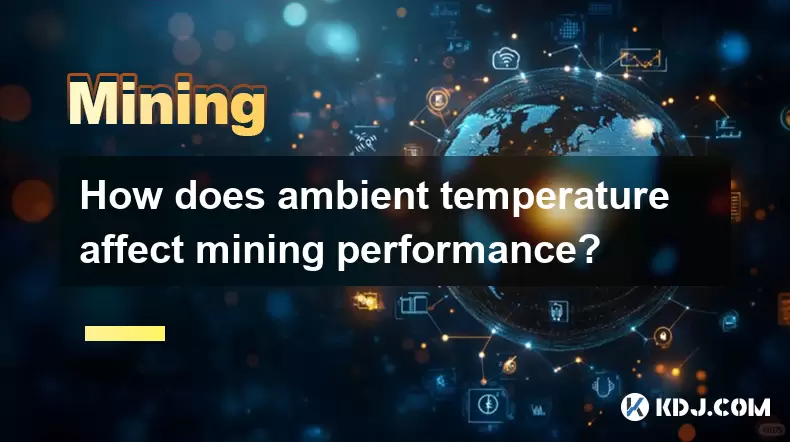-
 Bitcoin
Bitcoin $117,462.8204
-2.03% -
 Ethereum
Ethereum $3,061.1595
1.10% -
 XRP
XRP $2.9139
-2.19% -
 Tether USDt
Tether USDt $1.0002
0.02% -
 BNB
BNB $685.1357
-1.24% -
 Solana
Solana $161.3803
-2.11% -
 USDC
USDC $1.0002
0.04% -
 Dogecoin
Dogecoin $0.1948
-2.92% -
 TRON
TRON $0.2987
-0.89% -
 Cardano
Cardano $0.7330
-1.27% -
 Hyperliquid
Hyperliquid $47.7888
0.13% -
 Stellar
Stellar $0.4514
-2.93% -
 Sui
Sui $4.0169
2.74% -
 Chainlink
Chainlink $15.7088
-2.57% -
 Hedera
Hedera $0.2356
-3.33% -
 Bitcoin Cash
Bitcoin Cash $488.6656
-3.61% -
 Avalanche
Avalanche $21.2955
-1.47% -
 UNUS SED LEO
UNUS SED LEO $9.0415
0.42% -
 Shiba Inu
Shiba Inu $0.0...01332
-0.82% -
 Toncoin
Toncoin $3.0124
-0.62% -
 Litecoin
Litecoin $94.2175
-2.07% -
 Polkadot
Polkadot $4.0011
-0.61% -
 Monero
Monero $333.5714
-3.46% -
 Uniswap
Uniswap $9.1114
-1.56% -
 Dai
Dai $1.0000
0.02% -
 Ethena USDe
Ethena USDe $1.0005
0.00% -
 Bitget Token
Bitget Token $4.4951
1.87% -
 Pepe
Pepe $0.0...01242
0.47% -
 Aave
Aave $321.9943
0.51% -
 Bittensor
Bittensor $434.1984
5.13%
How does ambient temperature affect mining performance?
High ambient temperatures reduce mining efficiency by causing thermal throttling, lowering hashrates, and increasing power consumption and hardware wear.
Jul 15, 2025 at 10:21 pm

Understanding the Relationship Between Ambient Temperature and Mining Performance
Ambient temperature plays a critical role in determining the efficiency and longevity of cryptocurrency mining hardware. Cryptocurrency mining involves high-performance computing systems that generate significant heat during operation. When ambient temperatures rise, the ability of these systems to dissipate heat effectively diminishes, which can lead to thermal throttling, reduced hashrates, and increased power consumption.
Mining rigs are typically equipped with cooling mechanisms such as fans or liquid cooling systems. However, if the surrounding air is already hot, these cooling solutions become less effective, causing components like GPUs or ASICs to operate at higher than optimal temperatures. This directly impacts mining performance by slowing down processing speeds and increasing wear on hardware components over time.
The Impact of High Temperatures on Hashrate and Power Consumption
Elevated ambient temperatures have a measurable effect on the hashrate of mining devices. Hashrate refers to the computational power used by miners to solve cryptographic puzzles and validate transactions on the blockchain. When hardware overheats, it automatically reduces its workload to prevent damage — a process known as thermal throttling.
- High temperatures cause GPUs and ASIC chips to throttle, reducing their hashrate.
- Increased power consumption occurs because the system works harder to maintain performance under heat stress.
- Fans run at higher RPMs to compensate for the heat, consuming more electricity without proportional gains in performance.
These effects combine to lower profitability, as fewer hashes are solved per unit of time while energy costs remain constant or even increase.
Cooling Solutions and Their Effectiveness in Different Environments
Miners often implement various cooling strategies to mitigate the negative impact of ambient temperature. These include:
- Airflow management using exhaust fans and ducting to remove hot air from mining rigs.
- Immersion cooling, where hardware is submerged in thermally conductive but electrically insulating fluids.
- Using air conditioning units or climate-controlled rooms to maintain optimal operating temperatures.
- Installing heatsinks and aftermarket cooling solutions to enhance heat dissipation.
Each method has its advantages and limitations depending on the environment. For instance, in areas with consistently high ambient temperatures, immersion cooling may be more effective than relying solely on air-based cooling systems.
Optimal Operating Temperatures for Mining Hardware
Different types of mining hardware have varying temperature tolerances. For example:
- GPUs used in Ethereum mining generally perform best between 65°C and 85°C.
- ASIC miners like the Antminer S19 Pro are designed to operate efficiently up to around 80°C.
Maintaining temperatures within these ranges ensures maximum performance and longevity. Exceeding them regularly can shorten the lifespan of components and increase the likelihood of hardware failure. Monitoring tools such as MSI Afterburner (for GPUs) or built-in ASIC firmware interfaces allow miners to keep track of real-time temperatures and adjust cooling accordingly.
Practical Steps to Monitor and Regulate Mining Temperatures
To ensure mining operations remain efficient despite fluctuating ambient conditions, miners should adopt a proactive approach to temperature management:
- Use temperature monitoring software to receive alerts when thresholds are exceeded.
- Position mining rigs in well-ventilated spaces with unobstructed airflow.
- Regularly clean dust filters and fan blades to prevent airflow blockages.
- Implement environmental controls such as dehumidifiers or industrial fans to manage both temperature and humidity.
- Consider building or renting a dedicated mining facility with optimized cooling infrastructure.
By actively managing ambient conditions and internal hardware temperatures, miners can sustain consistent performance levels regardless of external climate factors.
How Humidity Interacts With Ambient Temperature in Mining Conditions
While ambient temperature is a primary concern, humidity also plays a role in mining rig performance and stability. High humidity combined with high temperatures can create a dangerous environment for electronic components.
- Excess moisture in the air can condense inside mining hardware, potentially causing short circuits.
- Low humidity environments can increase static electricity, posing risks to sensitive electronics.
- Balanced humidity levels (between 40% and 60%) help maintain safe and stable mining conditions.
Monitoring both temperature and humidity using hygrometers or smart sensors is essential for maintaining optimal mining conditions.
Frequently Asked Questions
Q: Can I mine cryptocurrencies in a hot climate without specialized cooling?
A: It is possible, but not advisable. Without adequate cooling, your mining hardware will experience thermal throttling, reduced efficiency, and potential long-term damage due to overheating.
Q: Do mining pools offer any advantage in managing temperature-related performance drops?
A: Mining pools do not directly affect hardware temperatures or cooling needs. However, joining a pool can help stabilize income by combining resources with other miners, which indirectly supports better planning for operational costs including cooling.
Q: How often should I check my mining rig’s temperatures?
A: You should monitor temperatures continuously using software tools. Real-time monitoring allows you to respond quickly to any abnormal spikes and take corrective actions before performance or hardware integrity is affected.
Q: Is it worth investing in a climate-controlled data center for small-scale mining?
A: For small-scale operations, the cost of a climate-controlled data center may outweigh immediate benefits unless you plan to scale. Consider starting with affordable cooling upgrades and assess whether expansion justifies the investment.
Disclaimer:info@kdj.com
The information provided is not trading advice. kdj.com does not assume any responsibility for any investments made based on the information provided in this article. Cryptocurrencies are highly volatile and it is highly recommended that you invest with caution after thorough research!
If you believe that the content used on this website infringes your copyright, please contact us immediately (info@kdj.com) and we will delete it promptly.
- Solana Memecoins Hit the Big Time: PUMP and Sonic Get Coinbase Listing Boost!
- 2025-07-16 06:50:12
- Core Foundation's Rev+: Fueling Ecosystem Growth Through Revenue Sharing
- 2025-07-16 06:30:17
- Ripple, California, and Collaboration: A New Era for Crypto?
- 2025-07-16 06:30:17
- Roman Storm, DPRK Hackers, and Prosecutors: A Tangled Web
- 2025-07-16 06:50:12
- Bitcoin, Altcoins, and DeFi: Navigating the Evolving Crypto Landscape
- 2025-07-16 05:30:12
- DeFi Demystified: Navigating the Wild West of Decentralized Finance
- 2025-07-16 04:50:12
Related knowledge

How are crypto mining profits taxed?
Jul 14,2025 at 12:28am
Understanding Cryptocurrency Mining and TaxationCryptocurrency mining involves validating transactions on a blockchain network and earning rewards in ...

How to keep a mining rig cool
Jul 12,2025 at 01:42pm
Understanding the Importance of Cooling in Mining RigsCryptocurrency mining is an intensive process that places heavy demand on hardware components, p...

Can you mine crypto on a laptop?
Jul 16,2025 at 02:21am
Is It Feasible to Mine Cryptocurrency on a Laptop?Mining cryptocurrency on a laptop is technically possible, but feasibility depends heavily on the ha...

Is crypto mining worth it?
Jul 16,2025 at 01:21am
Understanding the Basics of Crypto MiningCrypto mining refers to the process of validating transactions on a blockchain network by solving complex mat...

How much does it cost to start crypto mining?
Jul 13,2025 at 12:22am
Understanding the Basic Costs of Crypto MiningStarting crypto mining involves several upfront and ongoing expenses. The primary costs include hardware...

What is the most profitable crypto to mine?
Jul 13,2025 at 07:00am
Understanding Mining Profitability in CryptocurrencyWhen evaluating the most profitable crypto to mine, it's essential to consider several factors tha...

How are crypto mining profits taxed?
Jul 14,2025 at 12:28am
Understanding Cryptocurrency Mining and TaxationCryptocurrency mining involves validating transactions on a blockchain network and earning rewards in ...

How to keep a mining rig cool
Jul 12,2025 at 01:42pm
Understanding the Importance of Cooling in Mining RigsCryptocurrency mining is an intensive process that places heavy demand on hardware components, p...

Can you mine crypto on a laptop?
Jul 16,2025 at 02:21am
Is It Feasible to Mine Cryptocurrency on a Laptop?Mining cryptocurrency on a laptop is technically possible, but feasibility depends heavily on the ha...

Is crypto mining worth it?
Jul 16,2025 at 01:21am
Understanding the Basics of Crypto MiningCrypto mining refers to the process of validating transactions on a blockchain network by solving complex mat...

How much does it cost to start crypto mining?
Jul 13,2025 at 12:22am
Understanding the Basic Costs of Crypto MiningStarting crypto mining involves several upfront and ongoing expenses. The primary costs include hardware...

What is the most profitable crypto to mine?
Jul 13,2025 at 07:00am
Understanding Mining Profitability in CryptocurrencyWhen evaluating the most profitable crypto to mine, it's essential to consider several factors tha...
See all articles

























































































